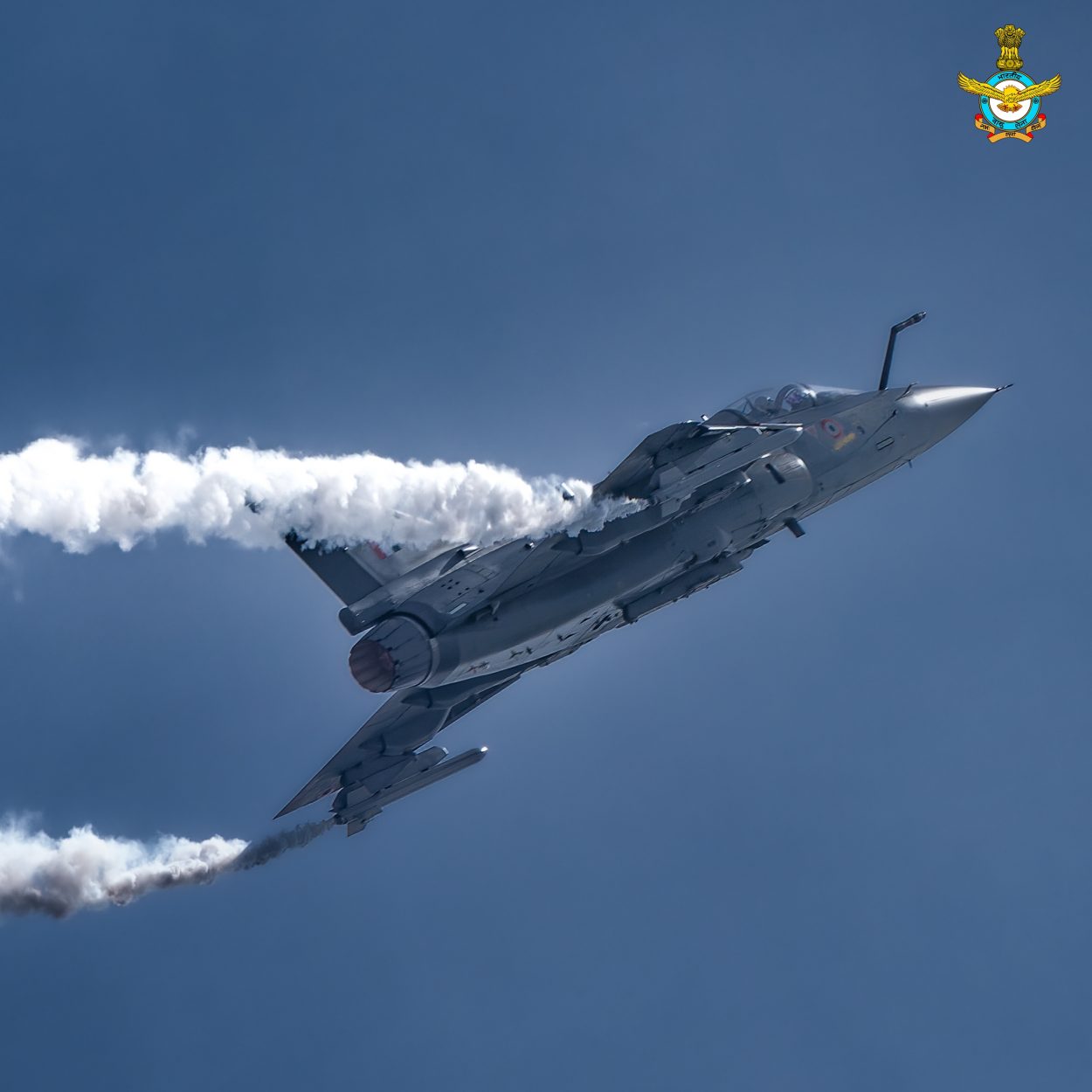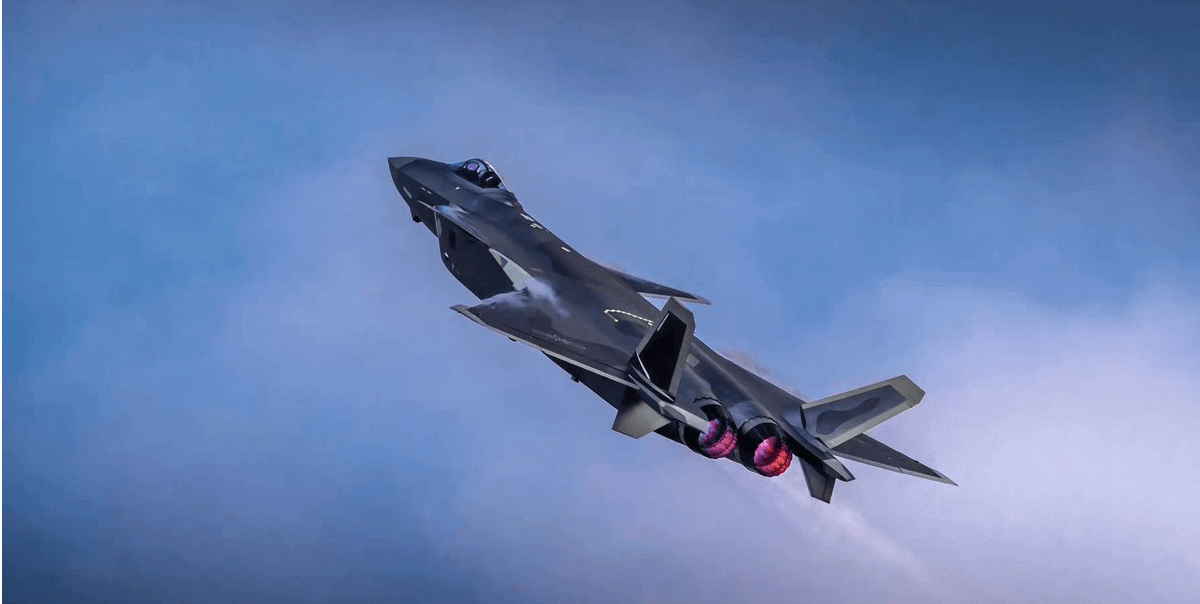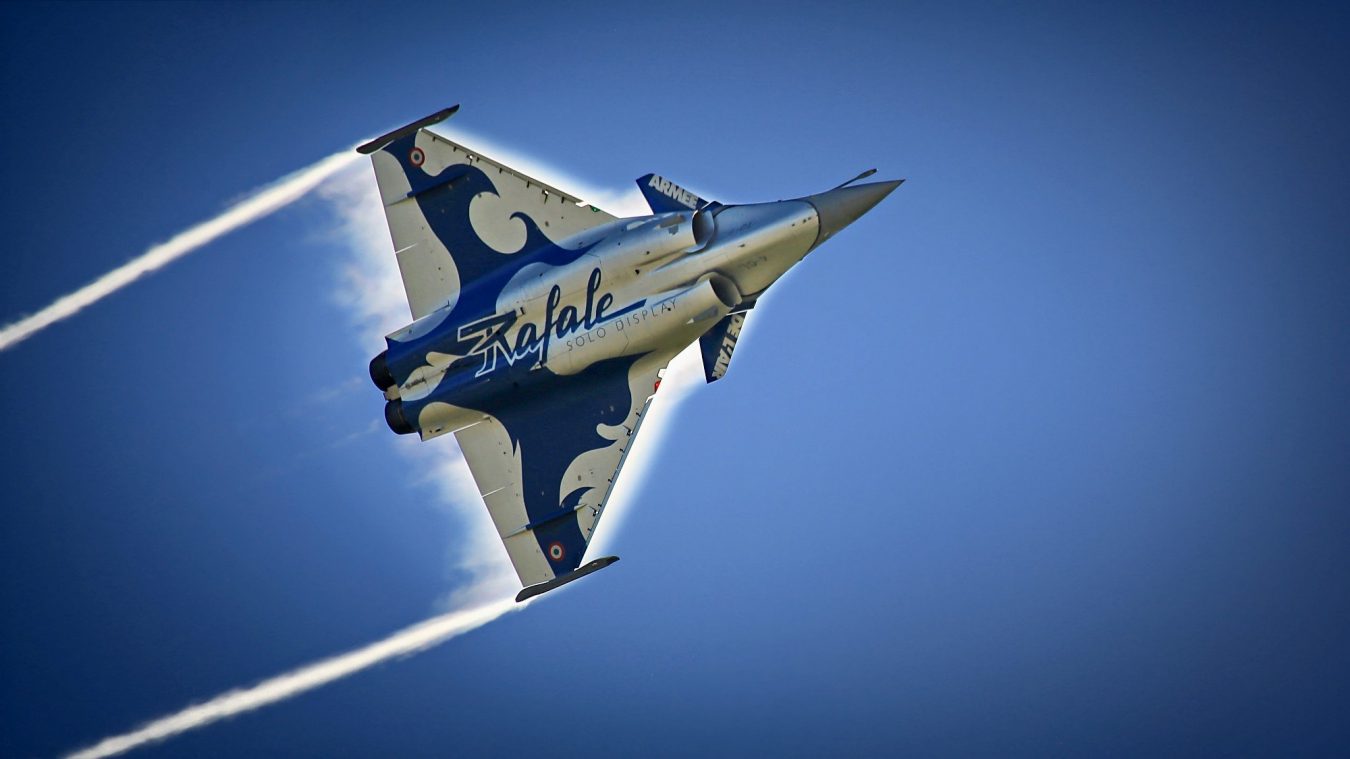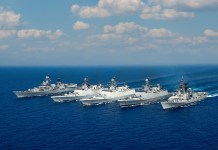OPED By: Group Captain TP Srivastava (Retd)
“The first batch of LCA Tejas was handed over to IAF after Indian Air Force was ‘forced’ to grant (rather accept) 28 concessions to HAL. It may be of interest to mention that PAF (Pakistan Air Force) and PLAAF (Chinese Air Force) pilots are unlikely to grant any concessions to IAF pilots flying the Tejas involved in air combat with JF-17s or J-20s.”
I have already written extensively on the issue ever since LCA (Tejas) development started when Project Definition of LCA was written in 1987. I will, therefore, keep it pointwise to keep it brief and to the point.
Helpless Against Hypersonic! US To Boost Its Military Base That China Is ‘Practicing To Obliterate’ With Deadly Missiles
- The current LCA variant flying in operational IAF Squadrons is yet to obtain a Full Operational Clearance Certificate (FOC).
- Current LCA is equipped with a US aero-engine.
- 83 LCAs ordered by IAF ‘might’ be delivered by 2030.
- Since India does not produce any PGM, smart weapons, or AAMs, matching imported weapons with the LCA platform will be an uphill task.
- There is no ‘known’ integral ECM/ECCM suite in LCA.
- The first lot of LCA was handed over to IAF after IAF was ‘FORCED’ to grant (rather accept) 28 concessions to HAL. It may be of interest to mention that PAF and PLAAF pilots are unlikely to grant any concessions to IAF pilots flying LCA involved in air combat with JF-17s or J-20s.
- India is unlikely to have an indigenous aero-engine by 2030, even if the French contract is signed in the near future.
- The utilization of the LCA fleet, therefore, will remain a question mark.
- Naval Variant LCA program has been shelved?
Status Of LCA Tejas MK II
As of date, flyable LCA Mk II is yet to roll out of the HAL hangar. As always, cosmetic (read fake) deadlines offered by HAL has already slipped. The trend is unlikely to change.
As a pilot having spent nearly 30 years in the cockpits of MiG-21s and MiG-29s, I do not foresee LCA Mk II getting airborne before 4 Jan 2026 to coincide with the 25th anniversary of the first LCA getting airborne.

If that is so and the development of LCA Mk II does not meet any hurdles, the first operationally capable LCA Mk II is likely to be available not before 2036.
As of now operational details of LCA Mk II are not in the public domain but if it is to match the adversaries’ flying machines in and around Indian skies, it must have;
- Production rate of at least 18 aircraft per year.
- Should have indigenous weapons, if developed by India by then.
- Should have lo-lo-lo radii of action of at least 500 km with a full weapon load of 4 tons.
- Should have an integral ECM/ECCM suite capable of neutralizing AAMs of that era.
- Should have mid-air refueling capability compatible with AAR platforms with IAF.
- Should have an indigenous AESA radar having search/track capability of at least 200/120 km.
- Should be equipped with suitable Beyond Visual Range (BVR) AAM.
- Should have digital pilot-friendly cockpit displays.
- Should have an integral Radar Warning Receiver (RWR).
- Should have a ‘Zero/Zero’ pilot escape system.
- Should have FBW and FADEC systems.
- Should have dry regime supersonic capability.
- Thrust to Weight ratio of a fully-loaded LCA MkII (4 tons weapon + max fuel) should not be less than 0.8.
- And many more but enough for the time being.
The State Of IAF In 2036 (Strike Element Only) Is Likely To Be;
- MiG-21 Variants would have been moved to display platforms.
- Jaguars would complete nearly 60 years, if still in service.
- MiG-29s and Mirage-2000 would have become nearly 50 years old (acquired in 1985-87).
- Su-30 Variants will be nearing 40 years of service. Effects, mostly adverse, of the ongoing Russia-Ukraine war will affect the fleet availability in the foreseeable future.
- Rafales will be nearly 20-year-old.
- Total Squadron strength will shrink between 22-26.
- IAF will comprise obsolete and obsolescent strike elements.
- Does LCA Mk II join IAF?
India’s Indigenous Capability
Currently, HAL does not produce most of the above capabilities except the airframe. Will it acquire and equip LCA Mk II with the above-stated capabilities is at present a question mark. Hence, we will have to go through the same process as in the case of LCA Mk I.
In the past 35 years (1987-2022) performance of HAL and its ancillaries has been sub-standard. Our indigenous capability has languished at an abysmally low level. Why? HAL must answer that question.
‘Atmanirbhar Bharat’ is a wonderful slogan provided it gets translated into action. At present we are a few light-years away from achieving that. The most formidable Air Force of the world, the USAF, is supported by the private defense industry viz Lockheed, Boeing unlike HAL, which is a state-controlled autonomous entity with no accountability. The solution does not lie in giving slogans. The solution is to break up HAL into private entities and demand output.
Marcelle Dassault of France has less than 20% strength as compared to HAL. Look what they produce! The concept of ‘PERFORM or PERISH’ must become applicable to such government establishments as well, as is happening to bureaucracy by weeding out the non-performing deadwood. HAL is in the same category.
Press reports have quoted that the current CAS has ‘accepted’ the LCA Mk II but has not hidden his highly desirable displeasure by further stating that acquisition of LCA Mk II is only an interim measure. What happens between 2022 and 2036 is of greater significance than the development of LCA Mk II.
The concern of CAS is genuine and must be viewed with professional maturity by the powers that be. The past performance of HAL does not infuse any degree of confidence about the availability of operational LCA Mk II by 2036.
Future Of The Indian Military
The capability of the Indian Military will depend entirely on whether the three services are equipped and provided with the matching, if not the best, platforms to keep twin threats from China and Pakistan at bay.
Nuclear Deterrence is not meant to take care of ongoing skirmish at fully active and volatile borders with these nations. Instability in smaller neighboring countries viz Myanmar and Sri Lanka does not augur well for India’s long-term security interests.
China has already trapped both these nations with debt-trap diplomacy. The next obvious step is to move military (read PLAAF) elements into these nations. I maintain that PLAAF operating from TAR is no threat but PLAAF operating from sea level airfields of these nations will be a formidable threat.
India will then face a truly volatile ‘TWO FRONT WAR’ situation. The probability of China moving PLAAF elements in these two nations is higher than 50%, hence a threat.

In the prevailing geo-strategic scenario and ‘terrorism’ as an accepted instrument of state policy of neighboring Pakistan, the Indian military (not IAF) needs platforms that can be brought to bear on the adversary in a matter of hours.
The only component that meets this challenging attribute is AIR POWER. Powers that be would do well to take a realistic and holistic view of the situation as it obtains and not base their decisions on presumptuous imagination.
Airpower is a vital component of any military, which can and will provide a favorable conflict termination situation to enable politicians and diplomats to negotiate the peace treaty from a position of strength.
We merely need to look at Israel. How is it fighting terrorism and existential threat so successfully for over 60 years by using airpower within minutes?
Postponing, worse still, canceling the acquisition of strike elements from foreign vendors is a disaster waiting to happen. Immediate acquisition of suitably evaluated strike elements for IAF is the crying need of the hour. Let ‘imaginary mirage’ of LCA Mk II not lull us into complacency.

We are already twenty years too late in inducting a new platform. An acquisition proposal for 126 fighters was placed in front of the government in 1996. We acquired 36 Rafales.
Gp Capt. G Ranjit Mohan (Retd), a former test pilot responds…
I applaud the enthusiasm in bringing this “Mirage” of an aircraft to the fore and the attention of all concerned. Today HAL is an important PSU. In short, it means that the nation needs to be proud of this aircraft manufacturer.
In reality, HAL works on a cost-plus basis and the cost is transferred to the Defence services, which are a captive market for it. So, HAL always makes a profit and a profit-making PSU is lauded by the mandarins in the ministry.
LCA was initially a Technology Demonstrator. The first two flyaway models were TD1 and TD2. based on Flight test experience, the aircraft was supposed to be redesigned to fulfill the ASR requirements.
Instead, the IAF and the Indian Navy were forced to accept this, and they were renamed PT1 and PT2 ( Prototype), and development funds were poured in and pre-orders were placed.
To be fair to HAL, the shortfalls in the capability of LCA are not attributable to it. The design agency for LCA is ADA and HAL is only manufacturing the product.
When DRDO thumps their chest at their achievements, one must ask them what happened to the KAVERI engine, which was to power the LCA?
GTRE, which was the prime design agency for the Kaveri engine has the unique distinction of not having developed a single aero-engine since its inception in the early 1950s and Kaveri will likewise never see the light of day. Nobody wanted LCA Mk I. Who wants MK II??
- Gp Capt. Tej Prakash Srivastava has served in Iraq and is a graduate of both DSSC and AWC. He was Directing Staff at DSSC and Chief Instructor at the College of Air Warfare. He Served at Air HQ, commanded a MiG-21 Sqn, and headed the IAF establishment of Strike Corps during ‘Operation Parakram’. He has authored a book titled ‘Profligate Governance – Implications for National Security. Views Personal
- Originally Published In Mission Victory India
- Mail the author at: tejgvp@gmail.com




